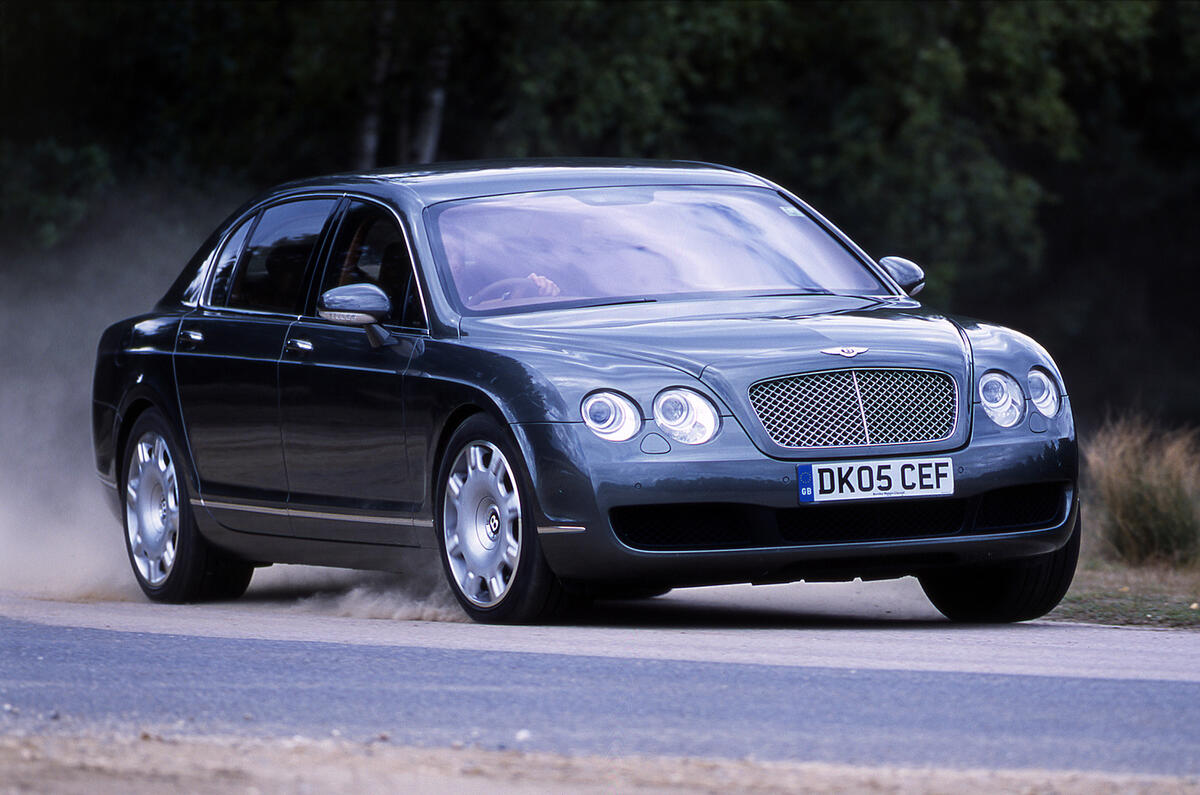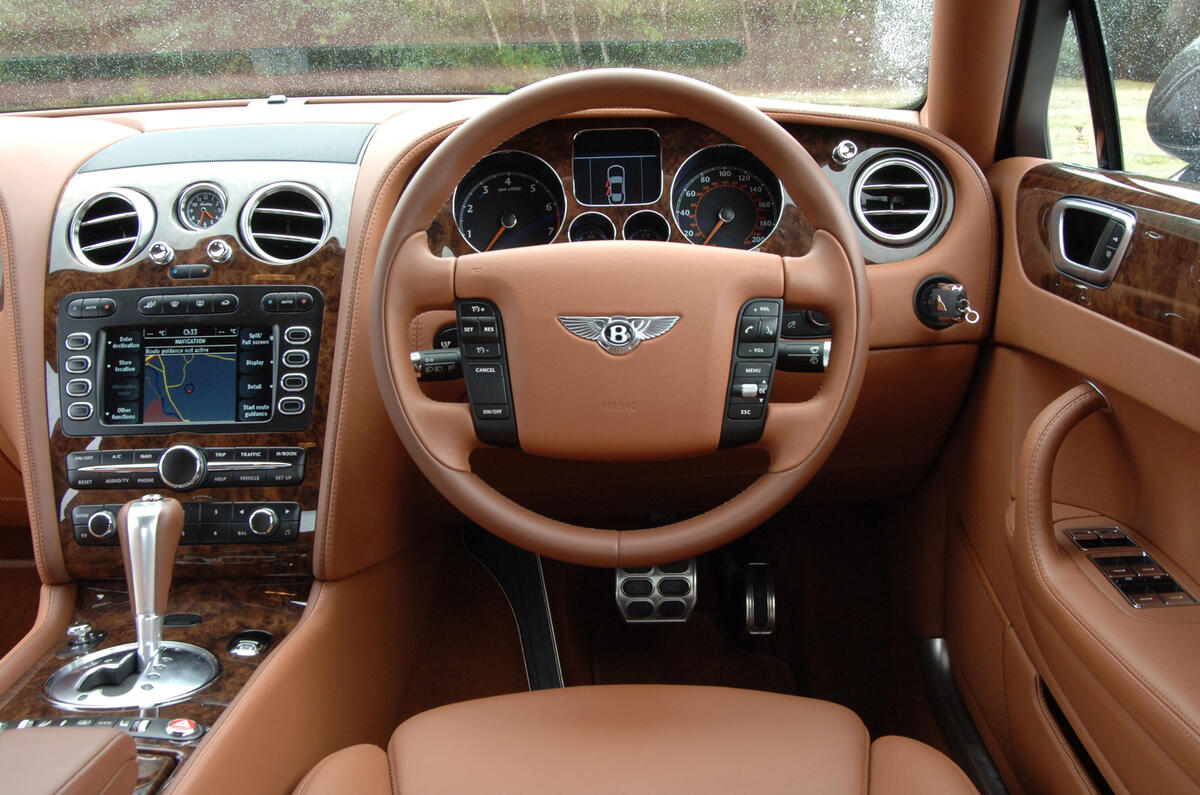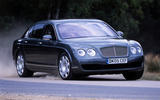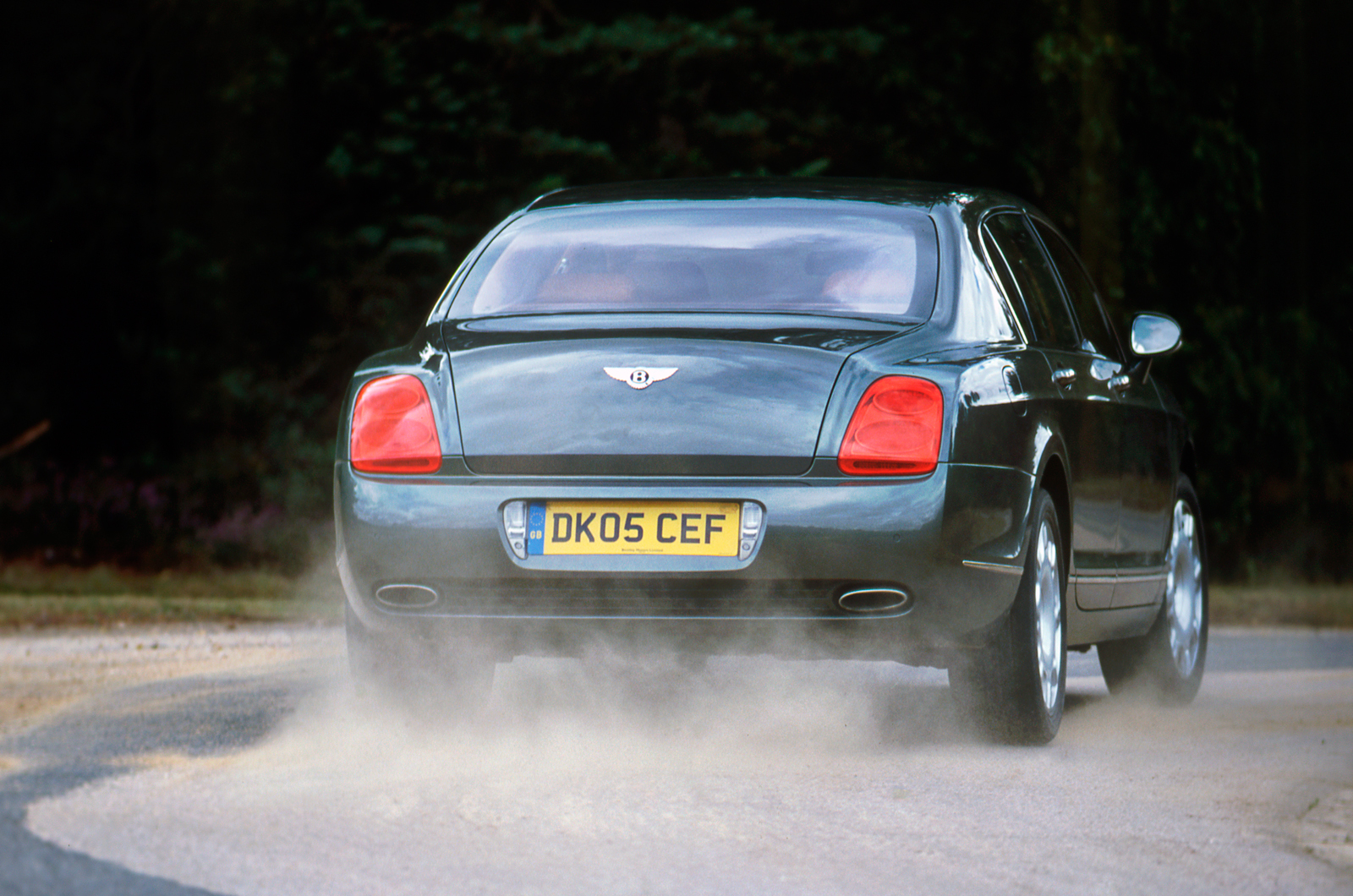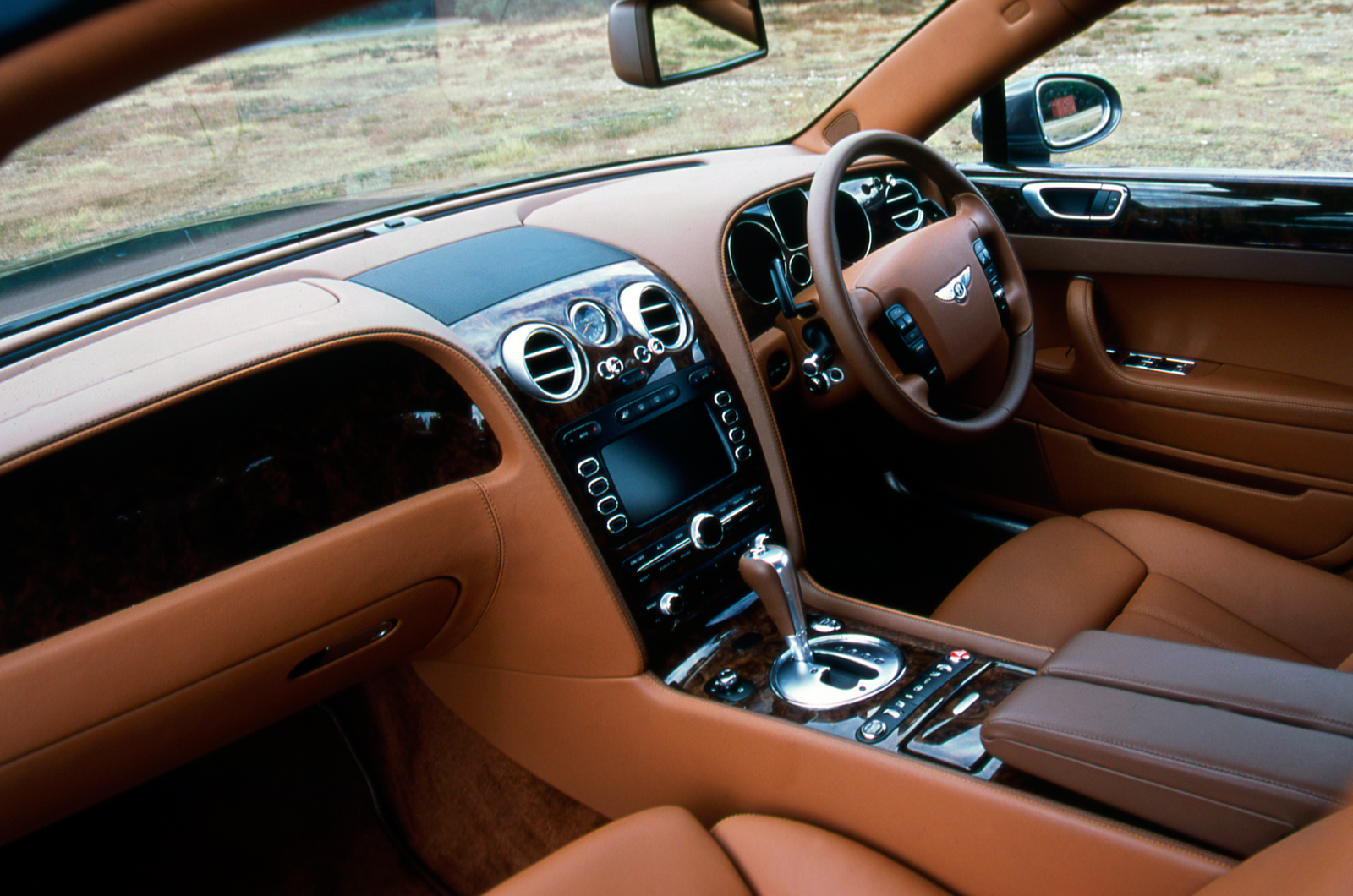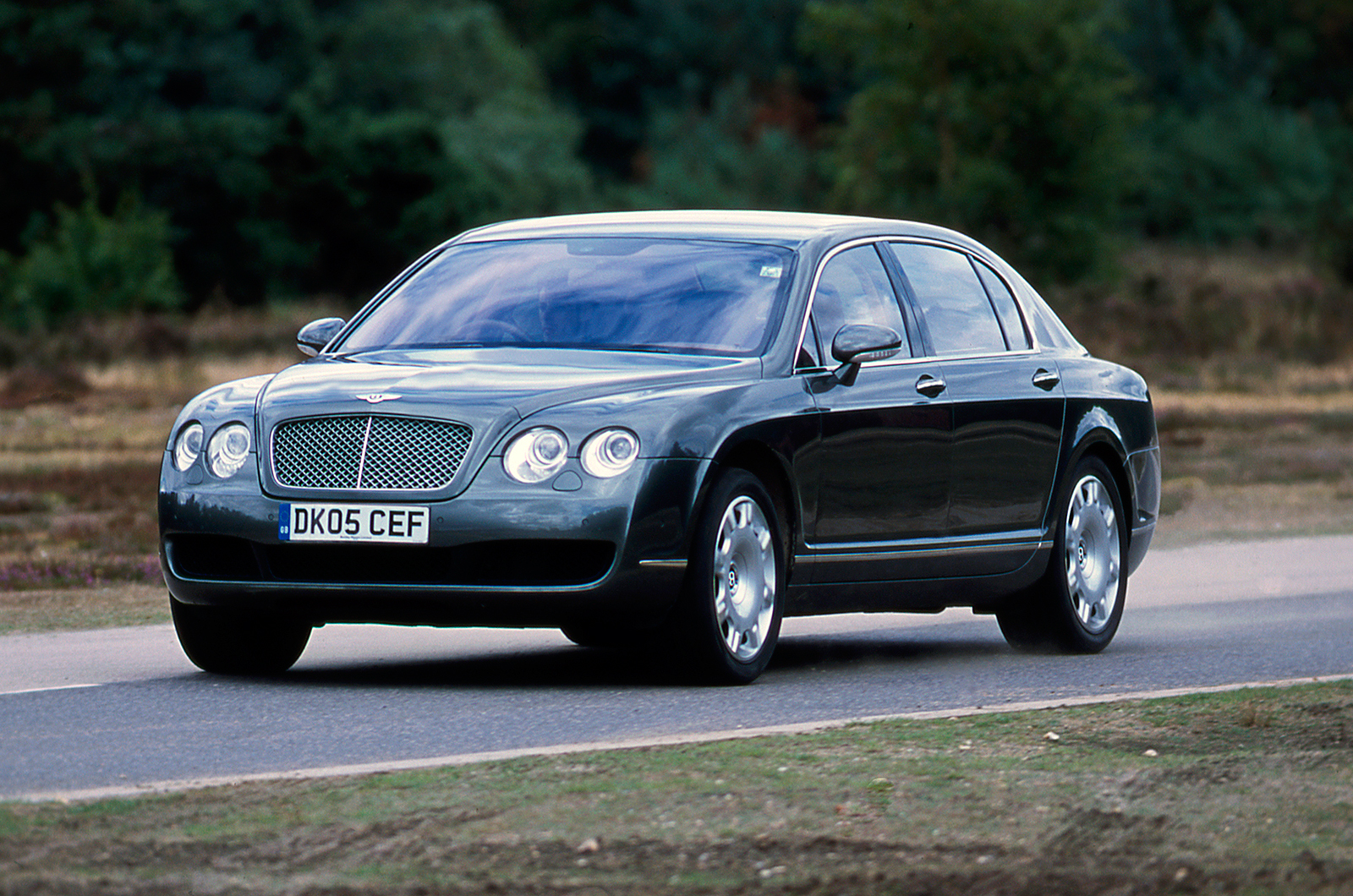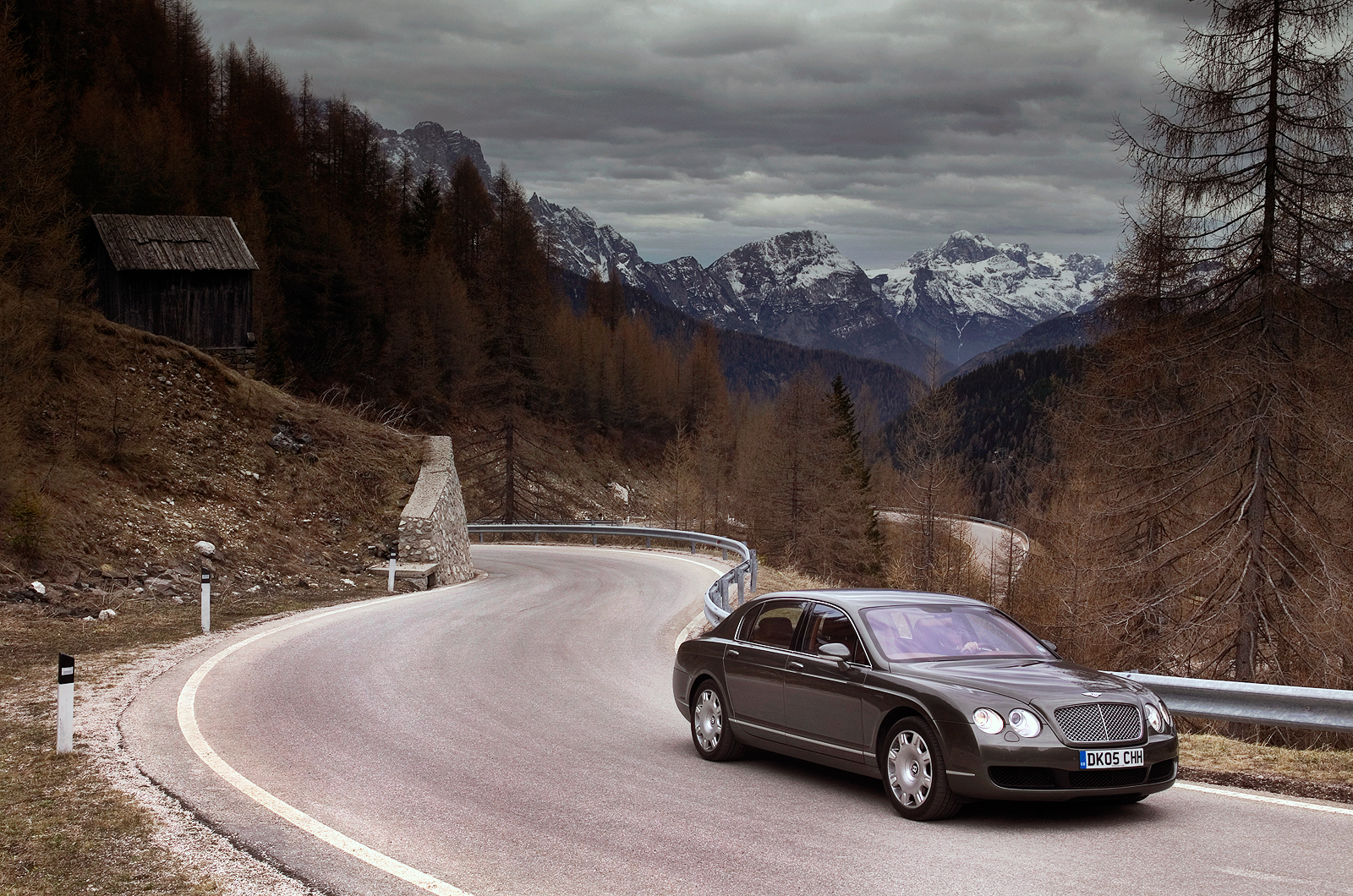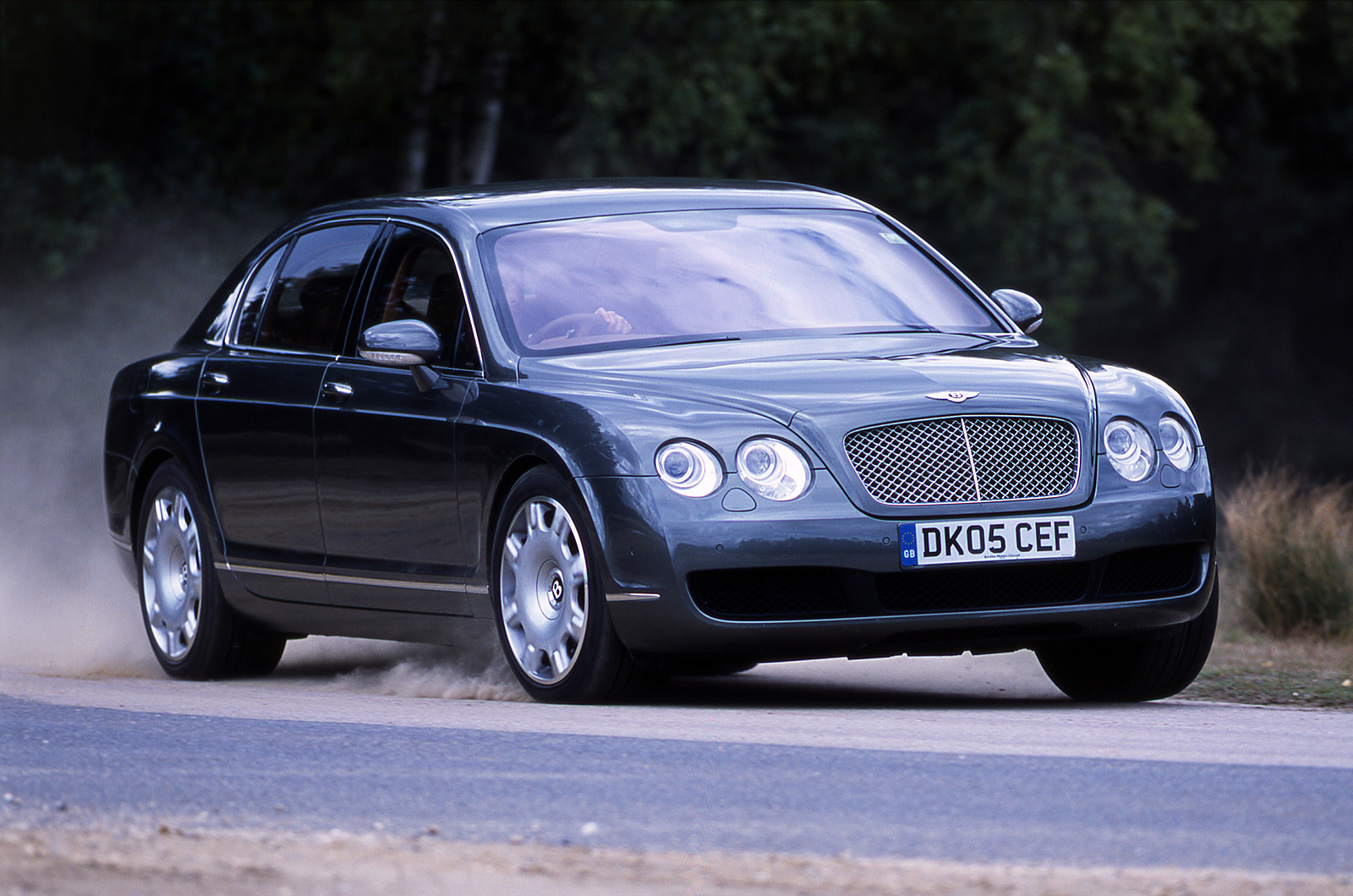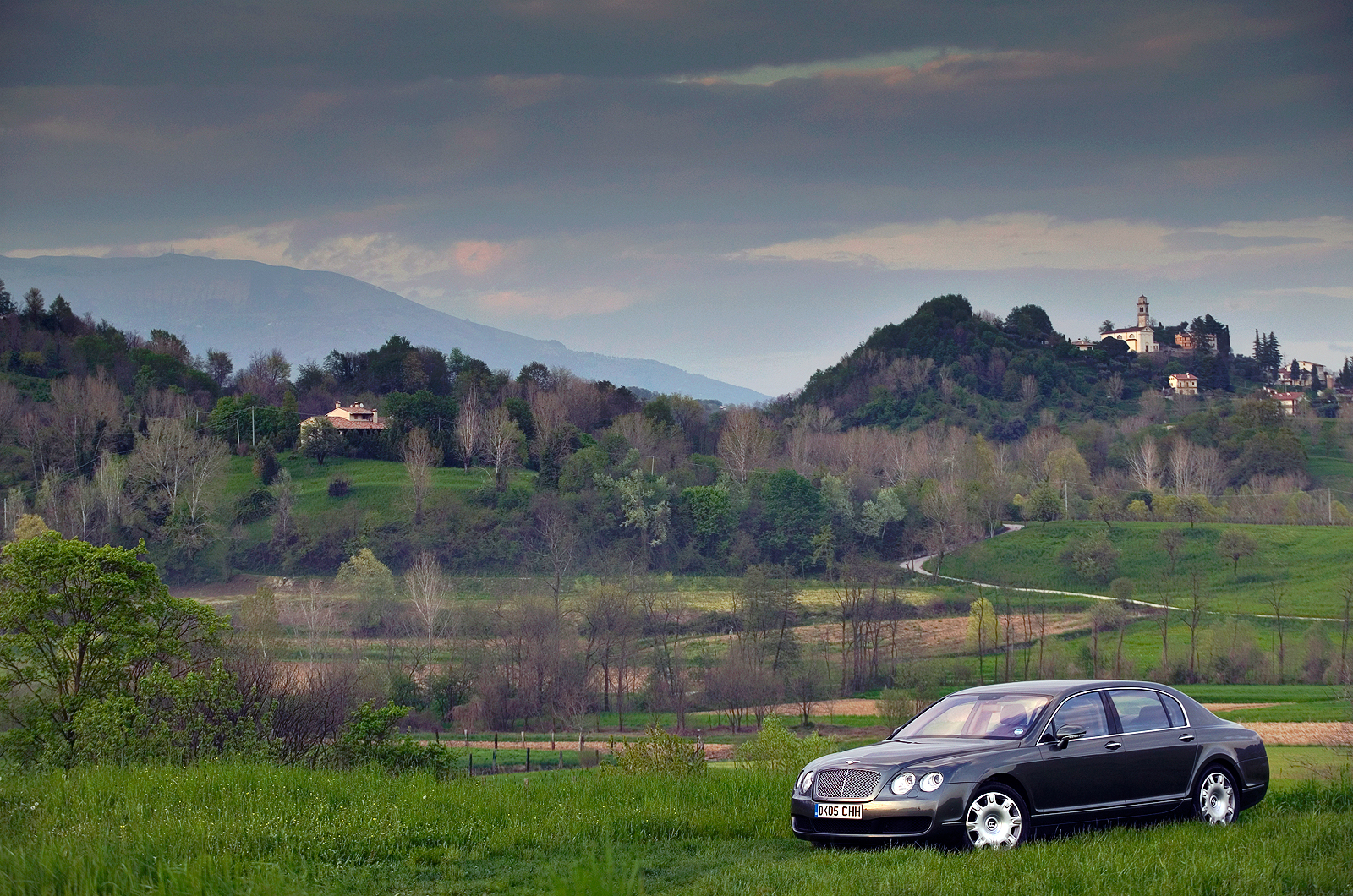So it’s quick then, as you would expect of a Bentley. But just as importantly, how is the Flying Spur's ride? The adjustable damping is accessed by a small button in a row of many behind the gearlever, and altered by turning the main control wheel in the centre of the dashboard. There are five settings between the extremes of comfort and sport, the default being halfway between those two.
It is in this setting that most Spurs will be driven, as it is the best compromise between body control and ride comfort, and also because fiddling with the rather sticky control wheel every time the road surface or environment changes quickly becomes a pain.
The major disappointment is the secondary ride, especially at low speeds over poor surfaces. Hitting a sunken manhole cover in the Spur creates more commotion than should be expected in a luxury limousine like this. And the great pity is that tuning the dampers for extra comfort only makes the car wallow more. Road blemishes send a distant shimmer through the structure at times, too, as if the dampers are struggling to contain the situation.
Still, your pad is in the country, and a classic English B-road opens up in front of you every morning. You never made any attempt to drive your Mercedes-Benz S-Class in a sporting manner – in fact you preferred it when someone drove it for you – but the Spur is different, because despite its size and weight, it is a car that’s fun to drive. Adjust the dampers to sport, accept the silly choppiness to the secondary ride, and marvel at the way the Spur grips and changes direction. You can push harder in this car then you would think possible, and despite the constant and early onset of tyre squeal and the inevitable understeer, it digs in and responds in a genuinely sporting way.
The steering is improved over the GT, too. There’s not much feel, but then this isn’t a Lotus Elise, and you can steer the Spur with much greater accuracy and confidence than the GT.



